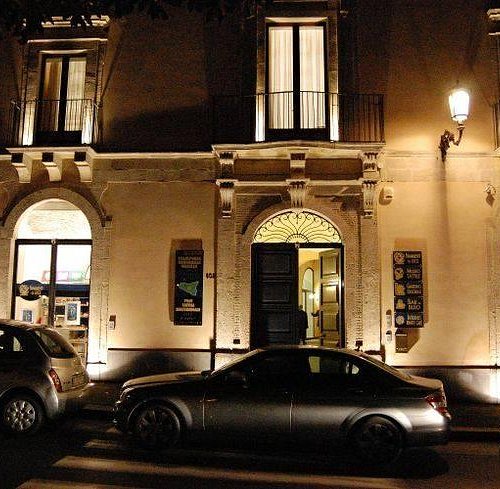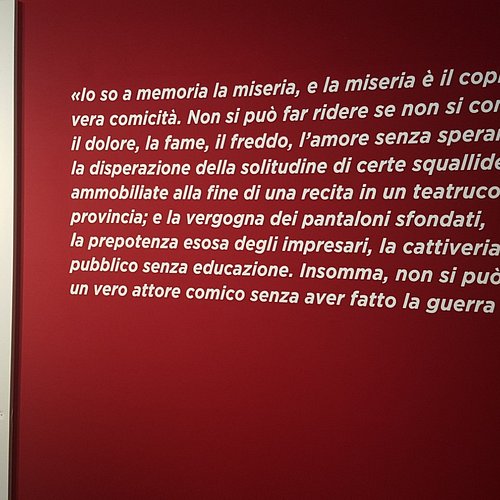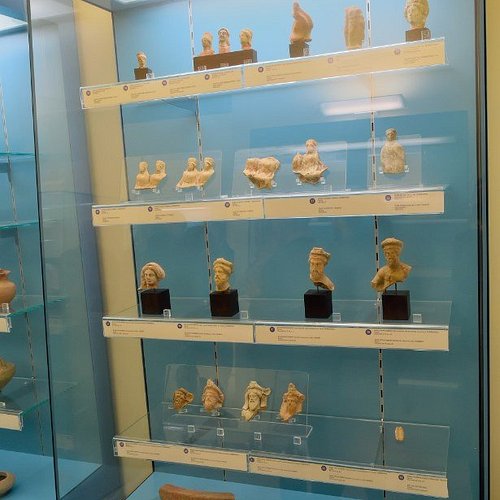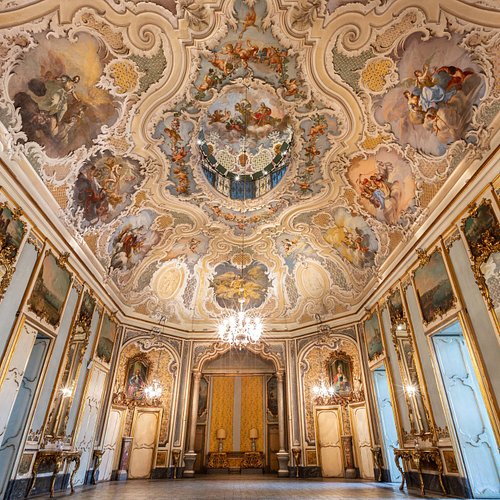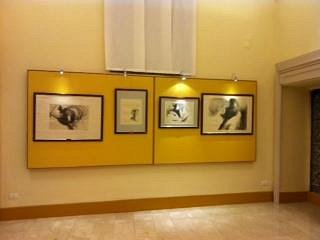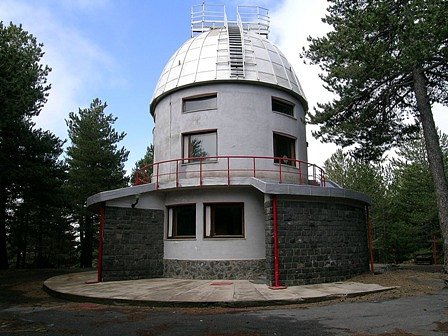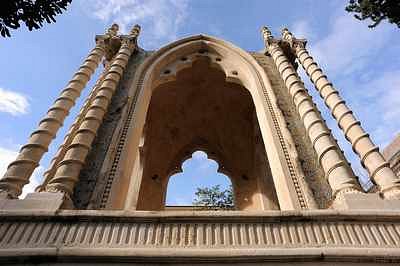Top 10 Museums in Catania, Sicily
Catania has been a prize of many empires over the centuries, from Greeks to Romans to Arabs to Normans to Spaniards (to name a few). But its citizens have a more dangerous enemy right in their backyard—Mount Etna, Europe's largest and most active volcano, which destroyed the city with earthquakes and lava flows in 1693. Look closely at the baroque buildings dating from after the eruption—you'll notice a creative use of lava.
Restaurants in Catania
1. MUSEO CROCIFERI - Art and Chocolate
Overall Ratings
5.0 based on 38 reviews
2. Polo Tattile Multimediale
Overall Ratings
5.0 based on 60 reviews
The POLO TATTILE MULTIMEDIALE born in Catania in March 2008 , it is located in the heart of Catania , in the beautiful Via Etnea , in a ' 700 building ; houses inside a unique structure in Europe , as it contains within it a Tactile Museum , unique in Southern Italy , a showroom , a bar in the Dark , a Sensory Garden . The Polo Tactile Multimedia offers visitors as a place where together, disabled and not , can experience , Knowledge Sharing and " touch" that you can live " like everyone in the world of all. " We have set ourselves the goal of greater cultural literacy by providing all the blind , visually impaired , and all citizens , allowing visitors of our unique experience in its kind , an experience to discover a new way to do integration. Due to the covid-19 emergency reservation is required.
3. Galleria di Arte Moderna (ex Convento di Santa Chiara)
Overall Ratings
5.0 based on 2 reviews
4. Museo di Archeologia dell'Universita di Catania
Overall Ratings
5.0 based on 2 reviews
5. Palazzo Biscari
Overall Ratings
4.5 based on 459 reviews
The most important private palace in Catania and precious testimony of the Sicilian baroque. The frescoed halls, full of charm and elegance, represent a splendid setting for concerts, meetings, receptions, gala evenings, fashion shows.
Reviewed By Carolbike - White Salmon, United States
The owner is an excellent story teller about the original prince and his family, bringing the history of this well-maintained palazzo to life. It was very interesting.
6. Museo Diocesano Catania
7. Museo Emilio Greco
8. INAF Catania Astrophysical Observatory
9. Monastero dei Benedettini
Overall Ratings
4.5 based on 2,221 reviews
Il Monastero di San Nicolo l'Arena di Catania (#monasterocatania), gioiello del tardo barocco siciliano e tra i complessi benedettini piu' grandi d'Europa. L'edificio monastico, che nasce nel '500 e si sviluppa fino ai giorni nostri, e' un esempio di integrazione architettonica tra le epoche: contraddistinto da molteplici trasformazioni oggi e' patrimonio mondiale dell'Unesco. Sede del DiSUM (dipartimento di Scienze Umanistiche) dell'Universita' degli Studi di Catania, custodisce al suo interno due domus romane, i chiostri e un intero piano costruito da G. B. Vaccarini sopra il banco lavico del 1669. Dal 2010 Officine Culturali, in collaborazione con l'Universita degli Studi di Catania, si occupa della valorizzazione del Monastero dei Benedettini. Il Monastero e' considerato uno dei beni culturali piu' significativi del meridione d'Italia. La missione assunta da Officine Culturali consiste nel rendere accessibile e comprensibile il Monastero nel migliore dei modi e al maggior numero di persone possibile. A tal scopo Officine Culturali ha attivato un'offerta di fruizione variegata e dinamica. Attraverso il servizio di visite guidate giornaliero e' possibile conoscere gli aspetti piu' significativi dell'ex plesso monastico. I percorsi guidati per i piu' piccoli sono arricchiti dai laboratori, dove la narrazione delle "arti e mestieri" benedettini e' svolta in maniera creativa e divertente da professionisti della didattica dell'arte, dell'architettura, delle tradizioni e delle scienze. Oltre al quotidiano svolgimento delle attivita' di promozione, valorizzazione, informazione e accoglienza, Officine Culturali e' promotrice di iniziative ed eventi culturali e di intrattenimento, finalizzati a rendere il Monastero uno spazio di integrazione e aggregazione per la collettivita'.
Reviewed By Baspall - Salamina, Greece
The tour of the monastery takes around 1.5 hours and gives you the opportunity to learn the very interesting history that comes with it. We took the tour in English language presented by Nicola... He was exceptional.
10. Museo Storico dello Sbarco in Sicilia 1943
Overall Ratings
4.5 based on 799 reviews
The "Allied Landings in Sicily Museum" (Museo Storico dello Sbarco in Sicilia 1943) is housed in one of the buildings forming the "Ciminiere" cultural centre. The museum narrates the events that took place in Sicily from 10 July to 8 September 1943. This period is still recent history, only seventy years have passed and many senior citizens can still recount the experience. Everything that we have forgotten is now conserved in this museum which aims to protect our most precious asset: peace. The museum is arranged on three floors covering an area of 3,000 square metres, including a temporary exhibition area. By means of reconstructed settings the museum has tried to recreate the conditions of life before, during and after the war, using simulations, projections and original exhibits.
Reviewed By Dannii_mvn - Istanbul, Turkey
It wasn’t on top of our list of things to do in Catania but thought we would stop by after a visit to the port (not worthwhile btw). It was the best decision ever. The entire scene was surreal. An old factory enhanced with steal and concrete with no one around (mind you this was the end of Nov). When we found the museum we were welcomed by five people who all helped us with the tickets. Looking at the visitors book we noticed we were the third ones there that day. The visit started of with a 10min film starting with the invasion of Poland in ‘39. Quite an ambitious start for a 10min clip. What followed was a trip to a bomb shelter of which I won’t reveal too much because it would be a shame to ruin the surprise. After this crazy experience we went through a rollercoaster of boring uniforms and amazingly surreal puppets (some of which made noise). Towards the end you get to see a Madame Tussaud-like exhibition with dictators and Churchill. I’ve never been a Tussaud fan but these were definitely impressive and thus quite unnerving (seeing Adolf that realistically up close). To be honest large parts are difficult to follow when you don’t speak Italian but the entire atmosphere and surroundings are definitely worth a visit. It was strange, surreal and interesting too! For sure a recommendation but do have a healthy sense of irony!!


